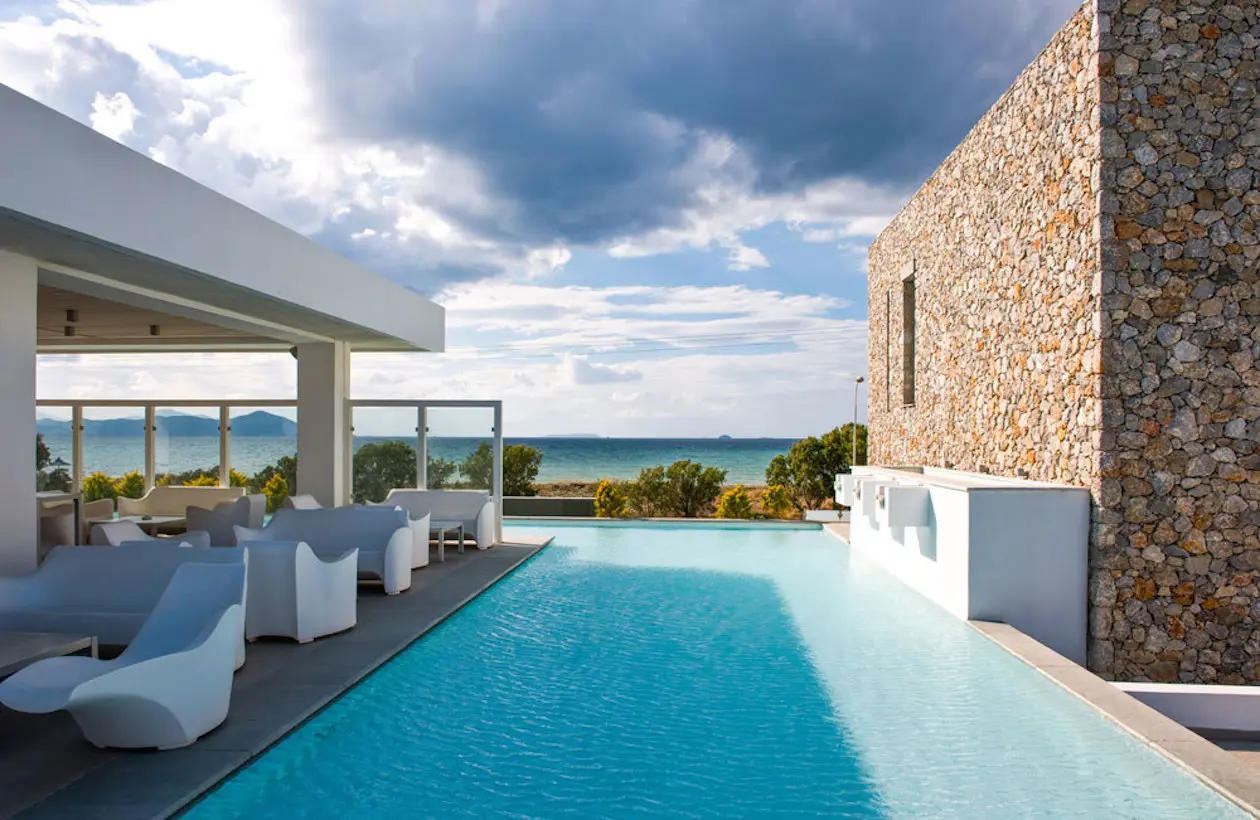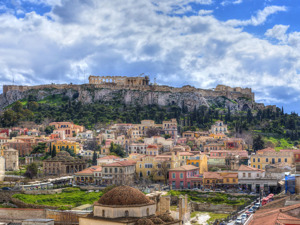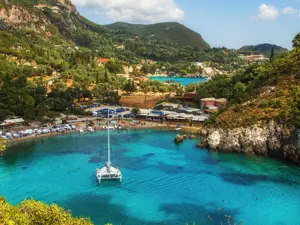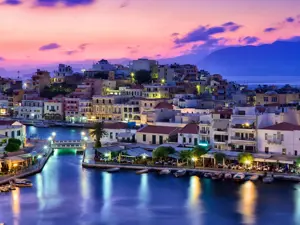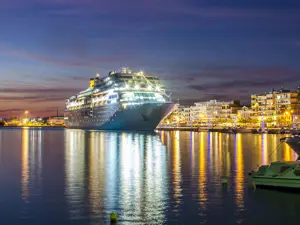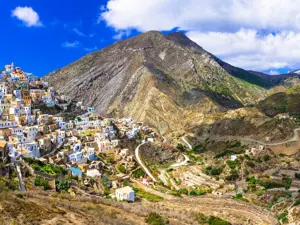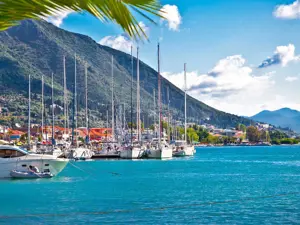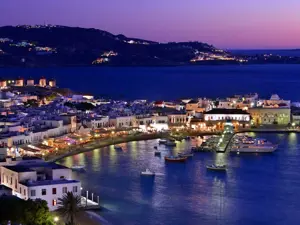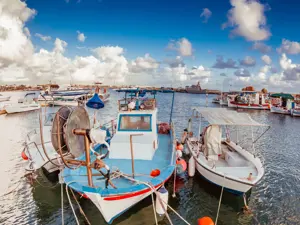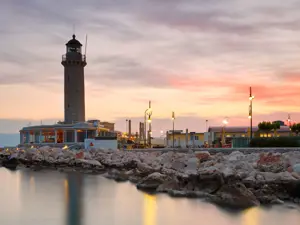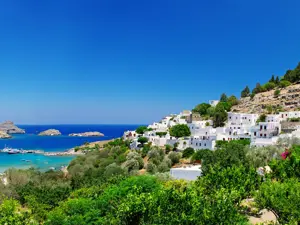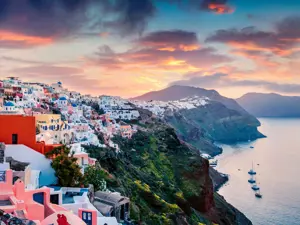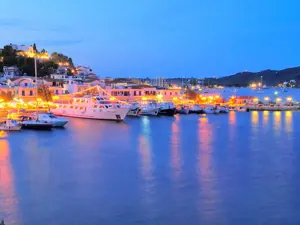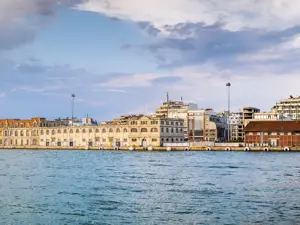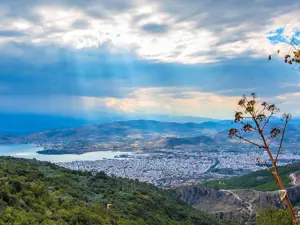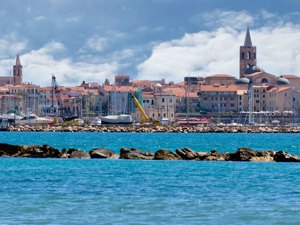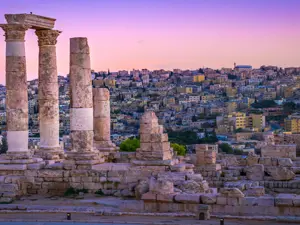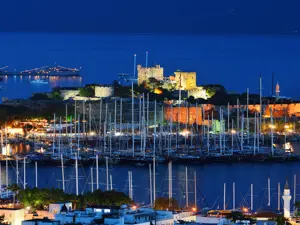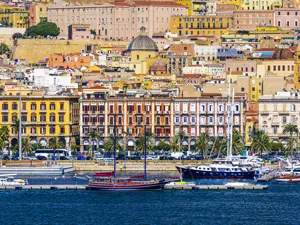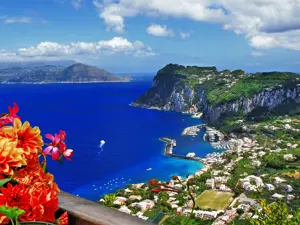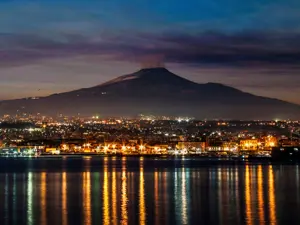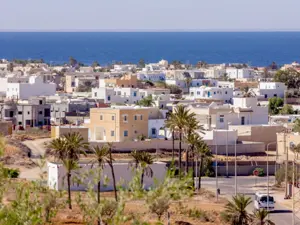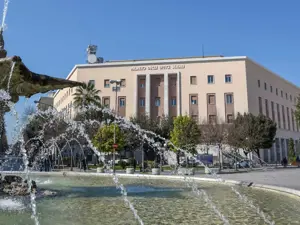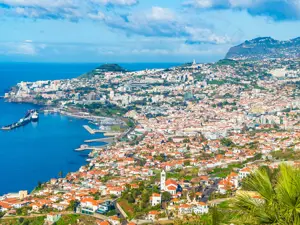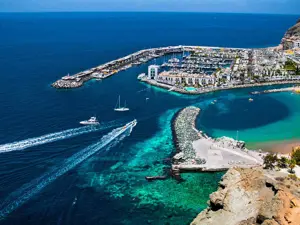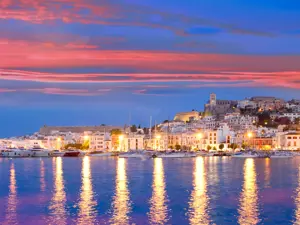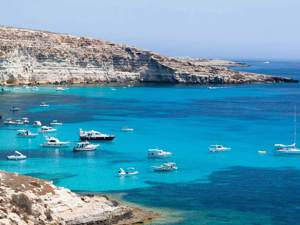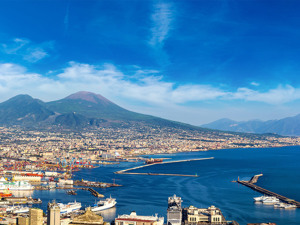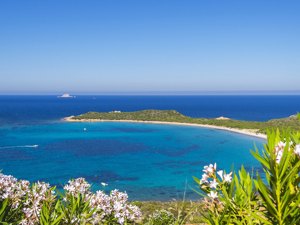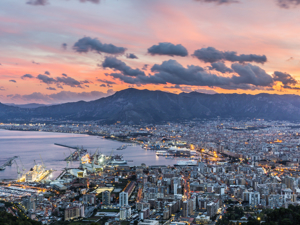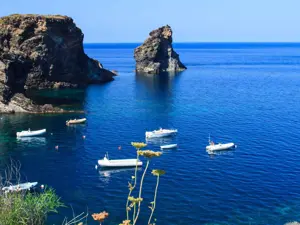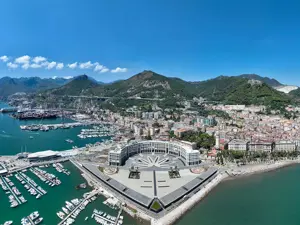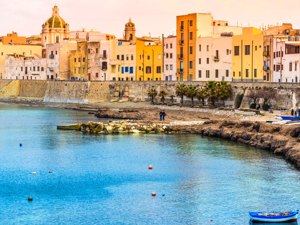The mythical Island of the Blessed, home of Hippocrates
In the south east corner of the Aegean lies the verdant island of Kos, home of Hippocrates. Here, according to legend, under a plane tree in the central part of the island, the father of medicine outlined the famous Hippocratic Oath to his students.
Luxuriant natural beauty, traditional villages, endless golden beaches with clear blue waters and architectural treasures make the land of Hippocrates a popular destination, and its blend of eastern and western cultures give it a particular charm.
Luxuriant natural beauty, traditional villages, endless golden beaches with clear blue waters and architectural treasures make the land of Hippocrates a popular destination, and its blend of eastern and western cultures give it a particular charm.
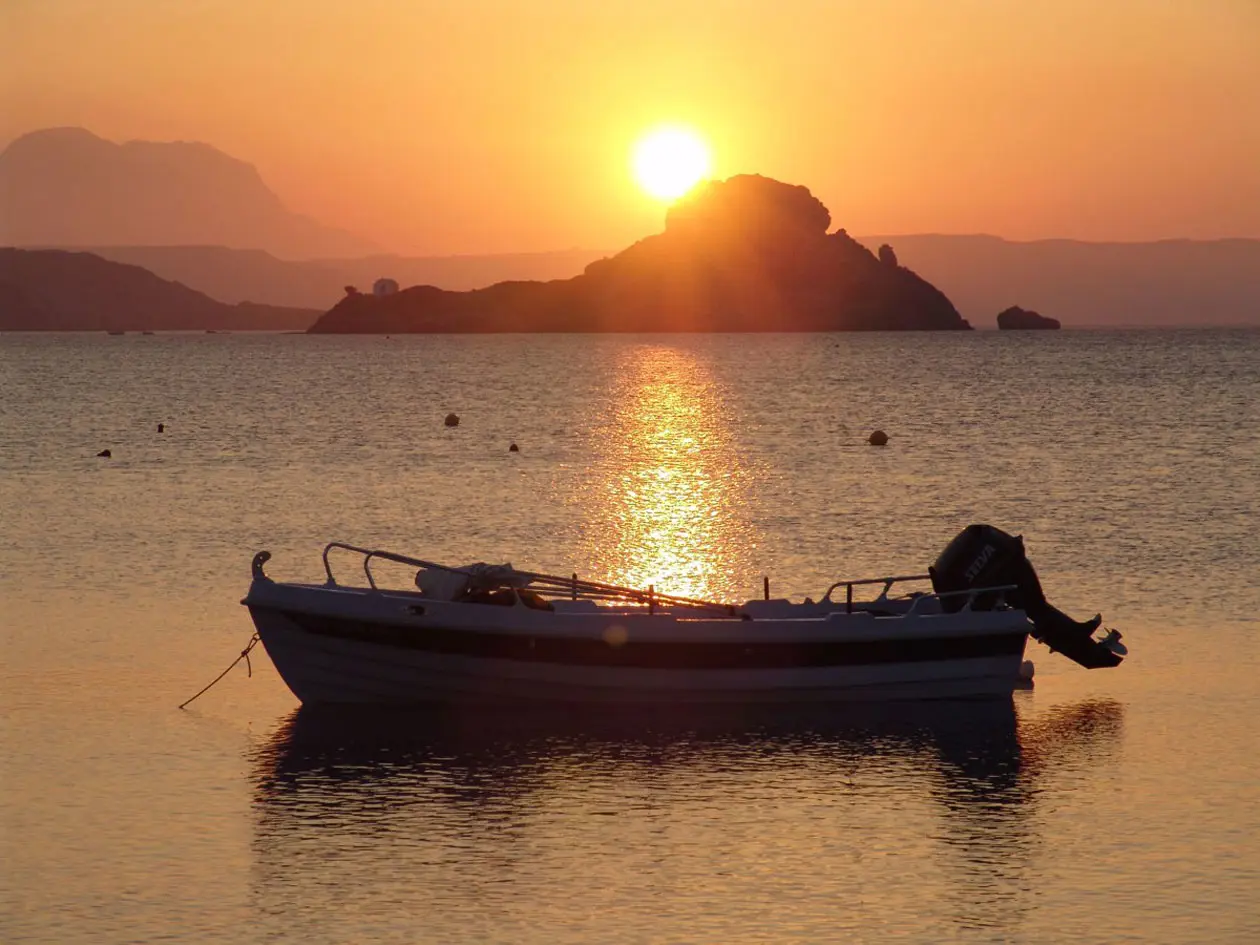
Kos Foto: Copyright © Sisterscom.com / Shutterstock
In ancient times, Kos was known as the “Island of the Blessed” due to its beauty and the fact that it was believed to be home of gods and heroes. Galen claimed that its climate was the best on Earth. In fact Kos is particularly blessed with an excellent climate: the winters are mild and the summers, thanks to the north-west winds, are long and not to hot. The sun shines almost continuously and warm autumns mean that it is possible to swim from May to October.
The city of Kos has developed around the port in a maze of bustling streets that lead to the characteristic Mosques of Defterdar and Hajji Hassan, behind the ruins of the old Agora.
Beaches of fine sand and limpid sea with a thousand shades of blue
The best part of the island is in the area of Kefalos where the most famous beaches can be found. The most beautiful, called Paradise Beach, has fine sand and is found in a delightful bay with crystal clear waters that vary from light azure to dark blue.
A short distance away, in Agios Stefanos, the beach extends to the foot of the ruins of the early Christian Basilica of Agios Nikolaos. From here it is possible to swim to the Islet of Agios Stefanos - known locally as Kastri - and climb up to the small blue and white church. The view is wonderful and several trees provide shade during the hottest time of the day. Kos also has many other very beautiful beaches, both around the city and further away.
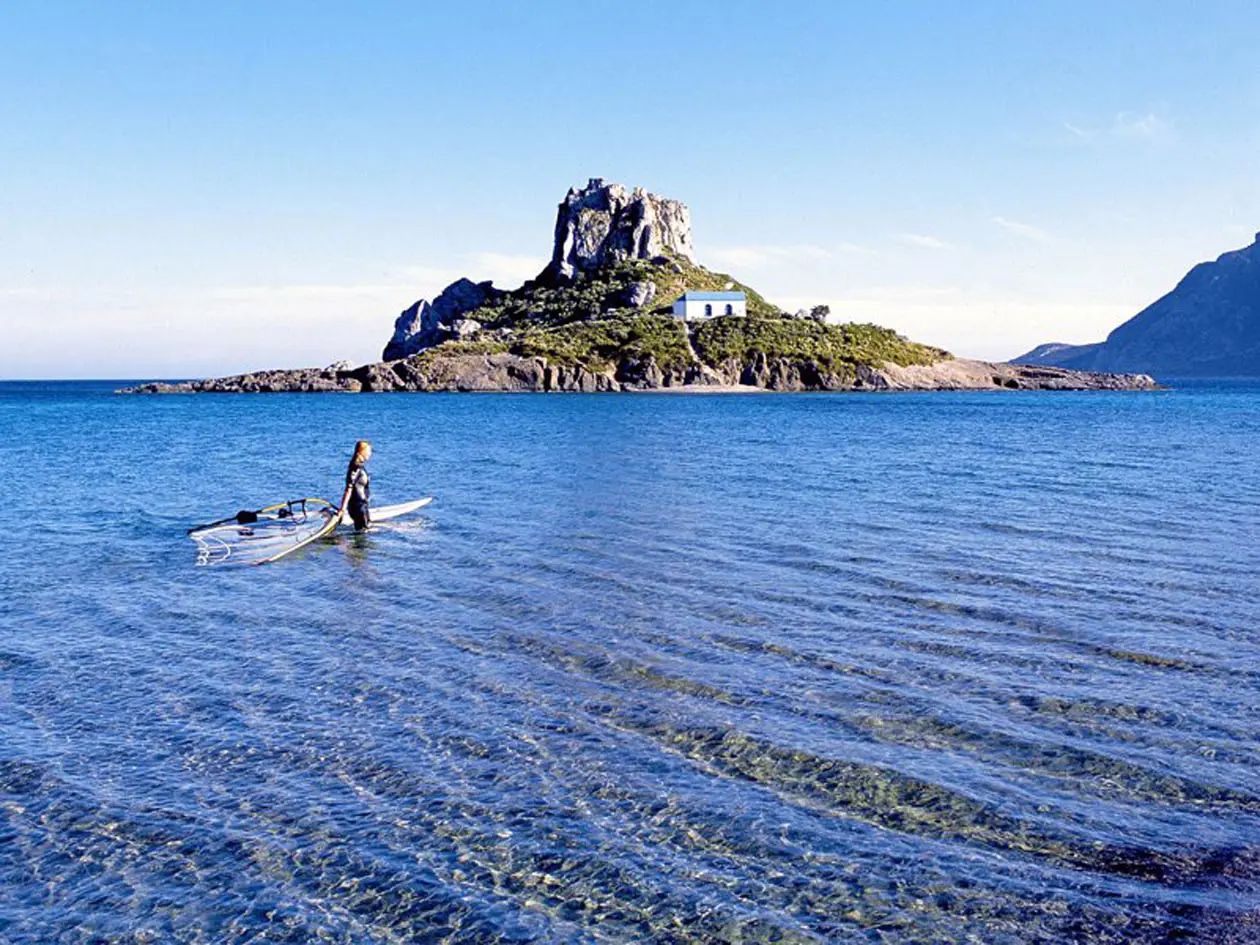
Located 26 km from the city is the picturesque village of Kardamena, which comes alive at night, while from Mastichari ferries leave for Kalymnos, another beautiful island famous for its sponges. The island lies 4 km from the Turkish coast, making it easy to go on a day mini cruise to Bodrum.
The city of Kos is abundant with archaeological remains from classical, Hellenistic and Roman eras. In addition to the Archaeological Museum, it is well worth visiting the ancient Agora, the ruins of the Temple of Aphrodite, the Temple of Hercules and the fifth-century Christian basilica.
Archaeological testimonies of an illustrious past emerge numerous on the island
The most important monuments in Kos are the Knights’ Castle, which dominates the city from above, and the ruins of Asklepion, the oldest hospital in the world, and a temple dedicated to Asklepios (who the Romans called Aesculapius), the Greek god of medicine.
The ruins of the Asklepion, which is surrounded by striking scenery, are distributed over three levels. A magnificent view of Kos and the Turkish coast can be enjoyed from the top.
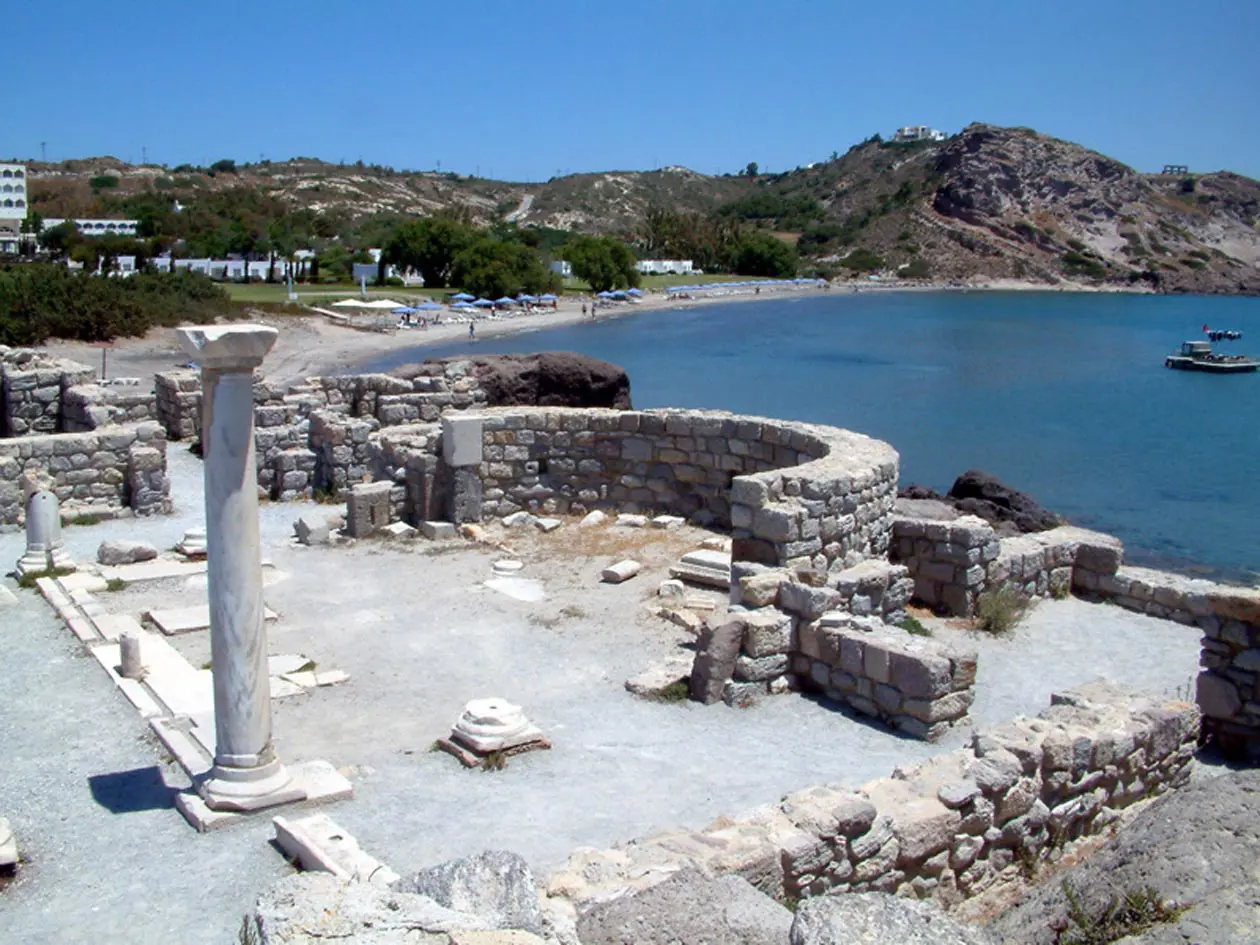
Other important archaeological ruins can be found in the port area and include temples, houses, roads and Greek-Roman baths. Other monuments include the Turkish mosques, the minarets, the Orthodox cathedral, the now abandoned synagogue, Italian-style buildings, and the fifteen-century Venetian ramparts.
Colors and scents of Greek cuisine
The island of Kos offers a rich gastronomic tradition with Greek and Mediterranean dishes.

Kos Island offer a rich gastronomic tradition with Greek and Mediterranean food
Among the typical products to taste, there are:
the wine-cheese, a local goat cheese submerged in red wine;
the pitaridia, a lasagna boiled in the broth juice;
the local dessert “Barbara“, composed of boiled wheat with tahini, sugar, almonds, nuts, raisins, pomegranate, cinnamon, rose water, orange skin and spices;
the lampropites, a cheese with eggs and yeast;
the katimeria, fried cheese pies served with syrup and the marmarites (traditional pancakes baked on marble) served with sugar or honey.
To taste also the afrena or eftazima, fermented breads whith yeast of the foam of boiled chickpeas and laurel leaves; the Lazari or lazarakia, a white wheat bread. Instead, the traditional beverage is Kanelada, made of cinnamon, and the Alefaskia a tea like herb found on the island. Also, the local wines and the thyme honey. Many restaurants and taverns can be found throughout the Island of Kos, to taste the local flavors.
Text by Alisè Vitri
Copyright © Sisterscom.com All rights reserved.
Tourism Board
www.visitgreece.gr
www.kos.gr
Partnership with Booking.com
Where to sleep in Kos
Kos offers hotels in all the most beautiful areas of the island, where to stay during your holiday in structures with different services.
To find the ideal hotel and the best offers you can do a search for the stars but also for districts or landmarks.
LANDMARKS
Hotels in tourist areas
WHERE TO GO in KOS
Monuments of Kos
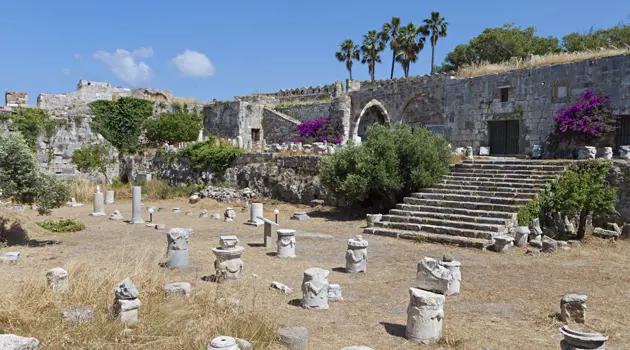
Photo: Copyright © Sisterscom.com / Shutterstock
MEDIEVAL CASTLE OF KOS
The Medieval Castle (Kastro Nerantzias), built in 1436, is situated in the port entrance in a location which is believed to have been fortified in Byzantine times.
The impressive edifice comprises the inner grounds with round turrets at each of the four corners, and the outer grounds that are surrounded by massive battlements. In the inner part there are altars, steles and ancient Greek architectural members.
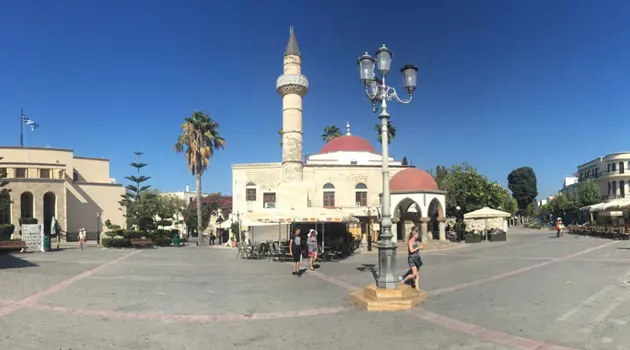
Photo: Copyright © Sisterscom.com / Shutterstock
FREEDOM SQUARE IN KOS
Freedom Square is the hub of the modern town, bordered by three enormous buildings, a legacy of the Italian rule: the municipal market, the club (during the Italian rule, it was called the “Hall of Fascism”), and the Archeological Museum, housing a collection of prehistoric finds, sculptures, and mosaic floors removed from the ancient town’s Roman buildings and built as a replica of the Roman public baths (thermae). Defterdar Mosque also borders the square.
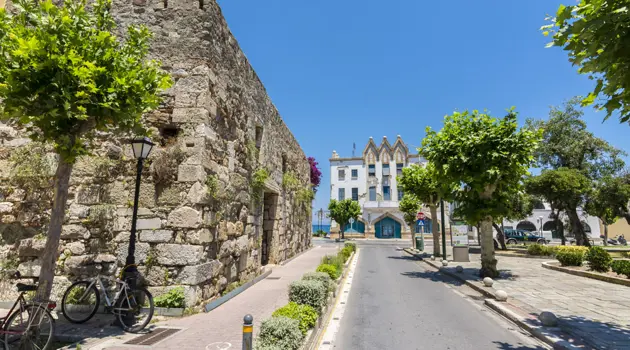
Photo: Copyright © Sisterscom.com / Shutterstock
ANCIENT TOWN OF KOS
The ancient Kos town was the island’s capital as of 366 B.C. The remarkable archeological sites include the Agora, market place; the Doric-style Hellenistic temple; the Altar of god Dionysos; the sanctuary of Hercules; the ruins of the castle walls’ northern side; the Roman public baths; the luxurious Roman mansions with their remarkable mosaic floors and the 2nd Century AD Roman odeon which seated 750 people.
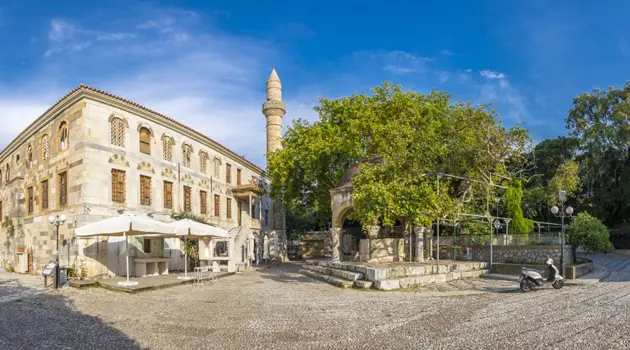
Photo: Copyright © Sisterscom.com / Shutterstock
HIPPOCRATES' PLANE TREE
Hippocrates’ Plane Tree, 2,500 years old, is opposite Lotzia Mosque. It is said that the great doctor, Hippocrates, taught his students and examined his patients in the shade of that tree. The trunk’s circumference is more than 10 metres and its gigantic branches cast their shade over the entire square. To the east side of the plane tree there is a round fountain whose dome is supported by 7 columns with Corinthian-order capitals.
Excursions in Kos
Even though the city of Kos is without doubt the vital centre of the island, the inland villages and characteristic towns of Asfendiou, Kardamena, Pylion, Antimacchia and Zia (famous for evening entertainment organised by the locals) are well worth a visit, and are all less than 20 km from the capital.
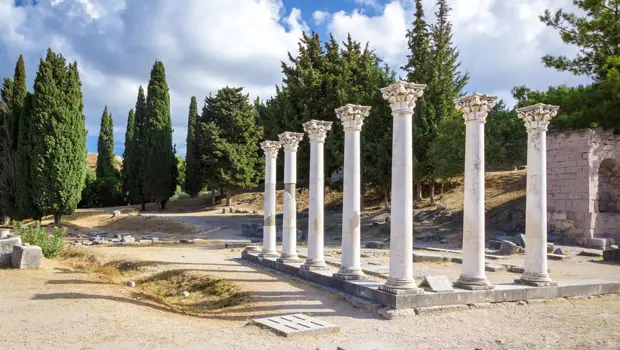
Photo: Copyright © Sisterscom.com / Shutterstock
ASKLEPIEION
Asklipieion, located 3.5 km south-west of Kos town, was the most famous temple sacred to god Asklipios of the Hellenic world. It was built in the 4th Century BC after the death of Hippocrates. Important to visit are the complex of the Roman Thermae, the altar dedicated to Helios, Hemera, Hekate and Machaon (son of Asklipios), the Ionian Temple of Asklipios and the large Doric Peripteral Temple of Asklipios (170-160 BC).
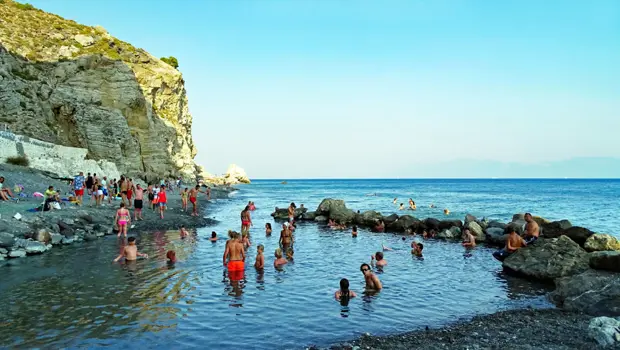
Photo: Copyright © Sisterscom.com / Shutterstock
AGIOS FOKAS
Agios Fokas is an old rural community, with a beautiful beach, that has recently acquired the character of a tourist resort. At nearby Empros Thermi there is a warm-water well keeping a temperature of 42-45°C. In the summertime, the well’s therapeutic waters flow into the sea and the waters are particularly beneficial to those suffering from rheumatic and arthritic pains. The water follows a submarine course from the volcano on Nisyros Island.
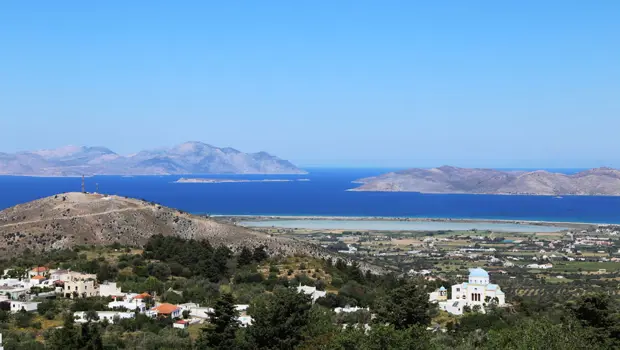
Photo: Copyright © Sisterscom.com / Shutterstock
ZIA
This is probably the most picturesque village on the island that keeps to its traditional character. The small white houses with blue doors and windows built in an amphitheatre-like manner on the rocks, the simple and hospitable people, the open-air market and the spectacular view have made Zia one of the favourite destinations on Kos. On the top of Mount Dikaios, above Zia, you will find the historic chapel dedicated to Dikaios Christos, built in 1079.
Partnership with GetYourGuide
Discover all tours
You might be interested in
Other destinations
Airports nearby Kos

